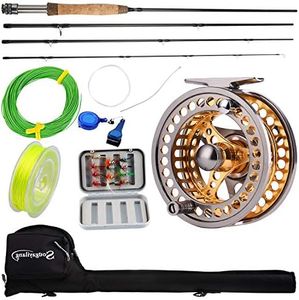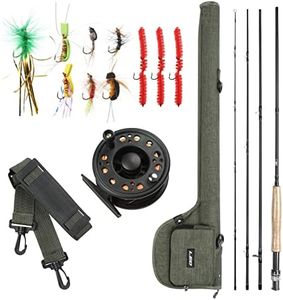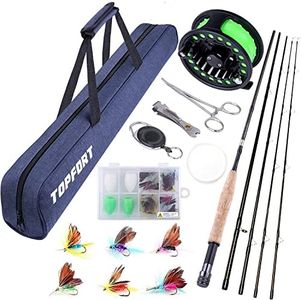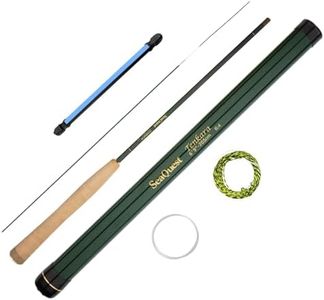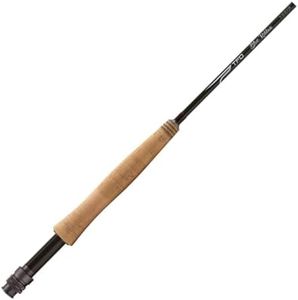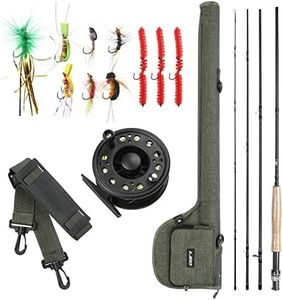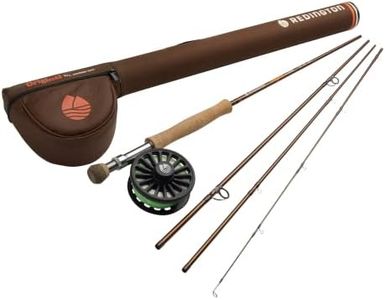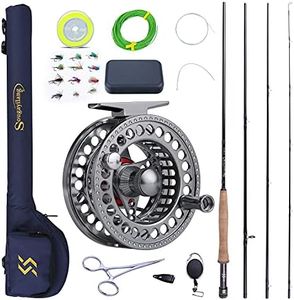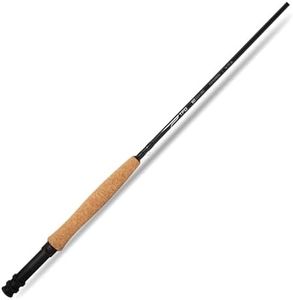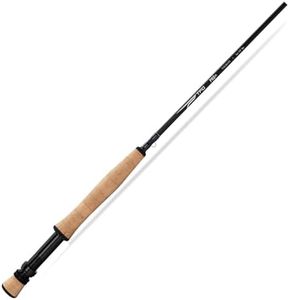We Use CookiesWe use cookies to enhance the security, performance,
functionality and for analytical and promotional activities. By continuing to browse this site you
are agreeing to our privacy policy
10 Best Fly Fishing Rods For Beginners
From leading brands and best sellers available on the web.Recommended lists
Buying Guide for the Best Fly Fishing Rods For Beginners
Picking your first fly-fishing rod can seem confusing, but with a bit of understanding, you’ll be able to choose a rod that fits your needs and skills. Think about what kind of fishing you want to do, where you’ll be fishing, and your own comfort with the equipment. Focus on rods that are beginner-friendly, easy to handle, and suitable for common fishing conditions rather than specialized situations.Rod LengthRod length refers to how long the fishing rod is when fully assembled, and it's important because it affects casting distance, control, and what kind of fishing environments suit the rod. Shorter rods, typically between 7 and 8 feet, are easy to handle and good for smaller streams with limited space. Medium-length rods, around 8.5 to 9 feet, are the most versatile and recommended for beginners, as they work well for a wide range of situations and give you better casting distance and control. Longer rods are usually over 9 feet and are meant for specialized styles or large rivers, which might not be ideal for a novice. For most beginners, a rod around 9 feet is the best balance.
Rod WeightRod weight doesn’t refer to how heavy the rod feels in your hand, but the size line it is designed to cast, which is crucial for matching your rod to the type of fish and conditions. Weights are numbered, like 3-weight or 5-weight. Lower numbers are for light lines and smaller fish, while higher numbers are for heavier lines and bigger fish. For a beginner targeting trout or similar species in rivers and streams, a 4, 5, or 6-weight rod is a great starting point, offering enough strength for common catches without being too stiff or unwieldy.
Rod ActionRod action describes how much and where the rod bends when casting or fighting a fish. Slow or full-flex rods bend throughout, medium or mid-flex rods bend in the middle, and fast or tip-flex rods mainly bend at the tip. Rod action affects how easy it is to cast and control your line. Beginners often do best with medium action rods, as they are forgiving, give good feedback, and are versatile for different techniques. Fast action rods require precise timing, and slow action rods suit delicate presentations; for starters, a medium action rod helps you learn the basics smoothly.
MaterialThe material of the rod affects its durability, flexibility, and price. Most beginner rods are made of graphite, which is light, strong, and responsive, making it easier for newcomers to handle. Fiberglass rods are a bit heavier and more flexible, providing forgiveness for learning to cast but at the cost of some finesse and power. Bamboo rods are traditional and expensive, mostly for enthusiasts, not beginners. For a first rod, graphite offers the best combination of performance and ease of use.
Rod PiecesRods come in different numbers of pieces, usually ranging from two to four or even more, and this affects how easy the rod is to transport and assemble. Two-piece rods are simple and sturdy but can be inconvenient to carry. Four-piece rods are more compact when broken down, fitting into backpacks or car trunks, without losing much performance. When starting out, a four-piece rod is usually the most practical option since it’s easy to bring along and just as effective on the water.
Handle TypeThe handle or grip is where you hold the rod, and its shape and material affect comfort during long fishing sessions. Handles come in different shapes—cigar, half wells, and full wells—each fitting different hand sizes and casting methods. For beginners, a half wells handle is a common choice because it's comfortable, fits most hands well, and provides good control. Cork is the standard material for grips, as it is light and provides a good grip even when wet.
